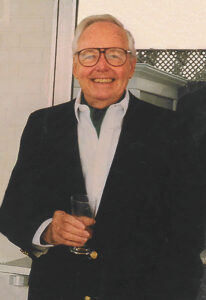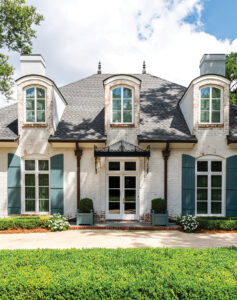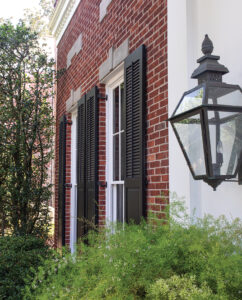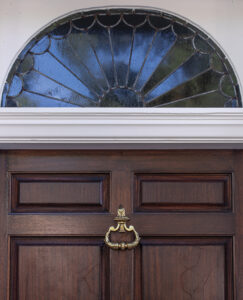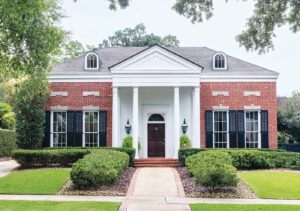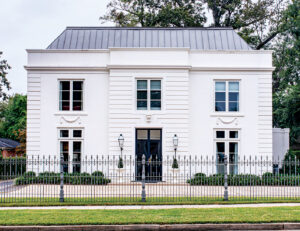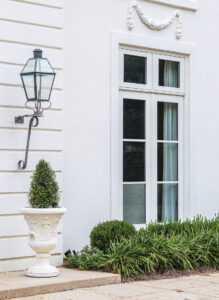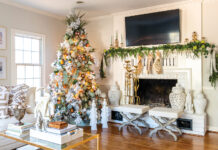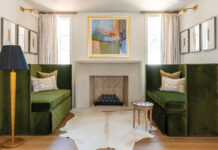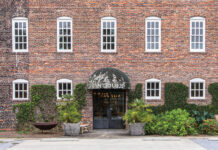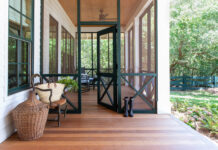Photos by Summer Ennis Ansley
Riding atop a Winnebago in efforts to obtain better views of houses. Having an ambulance ferrying him to a hospital drive by a project to check the location of an entrance. These two actions alone hint at the dedication (and fun) behind the designs of Thomas Eaton McCown (1923-1996). Known to family and friends as Tommy, McCown brought to his hometown of Mobile an architectural panache that it had never experienced. As a realtor, contractor, designer and developer, McCown took an approach to planning, landscape and architecture that, while being informed by the past, was wholly his own. A celebration of a selection of McCown’s most admired projects provides a glimpse into his prodigious output and incredible talent.
To better appreciate McCown’s work, a look at his life is important. He was one of eight siblings born to James Moore and Rosemary Hart McCown. Family was important for the McCowns, and to Tommy in particular. His large and loving tribe resided at 1204 Government Street. An 1860s house that was remodeled by George B. Rogers in 1910, the imposing dwelling was the perfect childhood home for such a gregarious and talented young man as McCown. He served in the Pacific at the tail end of WWII, and then attended Spring Hill College. McCown later served in the Navy during the Korean War, but returned to Mobile. During the 1949 Carnival season, he fell for Marguerite Haywood. Sugie, as Haywood was known, was a guest debutante of her friend Browder Boykin. Luckily for McCown, his fondness for Sugie was returned. The couple married at 11 a.m. on Ash Wednesday at St. Joseph’s Chapel. Tommy’s brothers, Father James “Hooty” McCown and Father Bobby McCown, conducted the service, with brother Jack McCown serving as best man. Sugie and Tommy McCown set up Housekeeping in Spring Hill, where they would raise their four children.
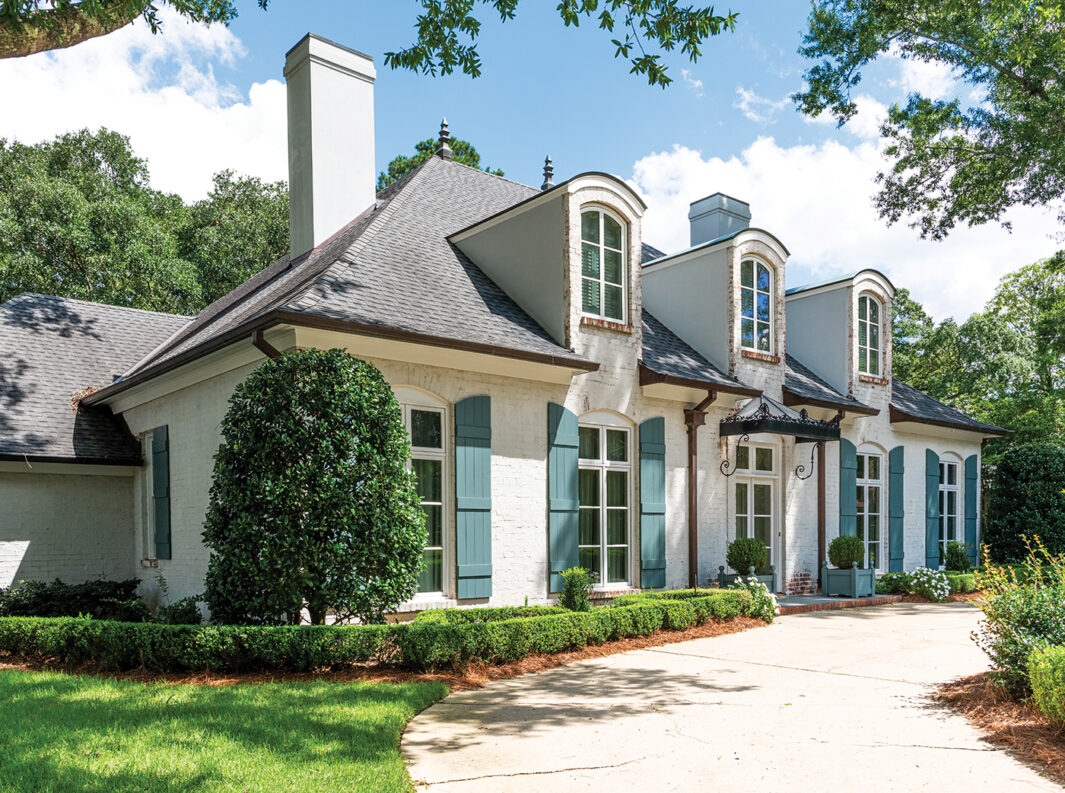
A BALANCING ACT
The Sharp residence, a house McCown designed for one of his daughters, perfectly balances design fundamentals with old-world charm.
Spring Hill would become the center of not only the McCowns’ family life, but also Tommy McCown’s career. Over the course of almost 40 years, he would design more houses in the residential enclave than any other creative professional in Mobile at the time. Symmetry and classicism (in some guise or another) informed his approach to design. The designer knew how to insure them. When he thought a design was a good one, McCown would say, tongue-in-cheek, “It won’t cost a thing.” Conversely, if a client made suggested or proposed changes that were not to his liking, the designer would allow that it was not “friendly” or “commodious.” If the descriptives did not accomplish his end, the rebuttal was “You can’t afford it!”
McCown’s Mid-Century and Post Mid-Century buildings, almost all of them residences, fall into three principal categories: French Classical, Gulf Coast inspired and Colonial or Early American influenced houses. The largest number of designs have a Gallic flair to them. Stucco walls, mansard roofs and French doors hinted at idioms ranging from Louis XIV to the XVI. The B. N. Balovich House at 109 Eaton Square dating from 1971 is a superlative example of one of McCown’s Louis XVI inspired creations. Of his Gulf Coast-based designs, the L. Edmonds House at 3929 Yester Place is particularly notable. Here McCown referenced Mobile and New Orleans side hall with wing houses. Over 400 of this distinctive typology once graced downtown Mobile alone. The Edmonds house is a masterful 20th-century interpretation (if not revival) of the genre. American-based residences took reference from Georgian, Federal, Greek Revival or Italianate buildings. At times, he replicated actual houses, as with the G. Ward House at 126 Eaton Square. Dating from 1975, the Ward House is a copy of Homewood, a famous Baltimore mansion.
PALLADIAN PERFECTION
A copy of the Homewood estate outside of Baltimore, the Ward House in Eaton Square is Tommy McCown’s finest essay in historic reproduction, albeit improved for modern-day living.
Regardless of the source of inspiration, all McCown’s houses were designed with contemporary amenities and for modern-day living. McCown was in no way averse to contemporary impulses, if they were grounded in the past and balanced. On a trip to Palm Beach, McCown rode atop the family Winnebago to obtain better views of buildings. A number of what could be called “Palm Beach Regency” designs resulted from this foray. Closer-to-home New Orleans served as font for study, and farther-afield France did the same. Regardless of the styling, all of McCown’s designs possess an undeniable elegance of line and proportion.
A house is just part of a commission. A truly successful design embraces and positively impacts a larger environment, both on and beyond the lot upon which it stands. McCown looked at the whole of a property when he designed a house. Thinking of how the dwelling was approached, he gave considerable thought to both pedestrian and vehicular access. McCown conceived walks and drives as experiences in and of themselves. He extended considerable attention to not only how a house looked within a lot, but also the view from within its walls. Indoor volumes communicated with outdoor rooms and views, and vice versa. Ever practical, McCown provided for parking and storage of vehicles, yet made those spaces secondary to the house itself. A house is after a home, and a Tommy McCown house is a work of art. Formal or informal, he encouraged plantings that were in concert with the designs as a whole.
RESTRAINED ORNAMENTATION
McCown’s Gallic artistry at its best, the Balovich House in Eaton Square is the finest example of Louis XVI revivalism in Mobile.
With Eaton Square and Place Levert, McCown explored the development of larger developments. The approaches to each of these residential ensembles was informed by historical precedent in terms of plans and elevations. As in all of his works, the mind and wit of the master is easily discernible. Eaton Square is two-part. Facing Old Shell Road, terrace, which is a row of three or more attached houses of the same design. Here they are American Federal in detail and proportion. Located just west of the terrace portion of the development is Eaton Square proper, which features 18 residential buildings that line a slightly curved street that ends in an octagonal square. Residential squares have a hallmark of urban design for generations. Tommy McCown gave Mobile its best 20th-century essay of the planning approach. While McCown did not design every house in Eaton Square, he is responsible for most of the dwellings. A mixture of attached and detached houses, the designs fall into all three of McCown’s three principal design categories. The square, sidewalks (a rarity in Spring Hill at the time), plantings, street furniture and other features unite the development into a harmonious whole. Further west on Old Shell Road is Place Levert. It features two terraces comprised of nine units each. McCown’s solution to what could have been monotonous box-like buildings was to crown the end and center units with pediments, thus creating symmetry, centrality and unity. The grass square at the center of the development does not so much separate the two terraces as it makes them one with the overall design. Like his single-family designs, McCown accommodated parking for residents and guests without taking away from the architecture and landscape.
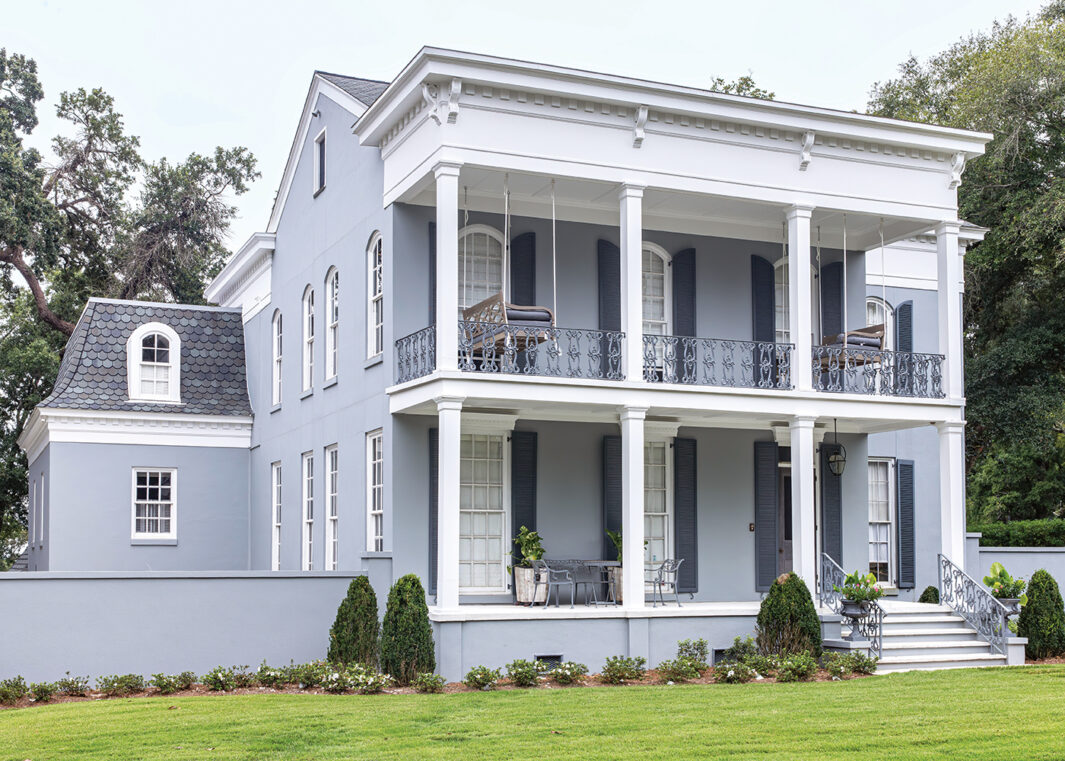
GALLERIED GRANDE DAME
The Edmonds House in Yester Place draws inspiration from the grand 19th Century townhouses for which Mobile and New Orleans are justly renowned.
Tommy McCown was active as a designer, developer and contractor from the 1950s into the 1990s. During this period of Mobile’s history, one not generally known for more traditionally-minded new construction, he maintained a dialogue with the past achievements for the benefit of not only his clients, but anyone who experienced his designs. Among his last projects was a house at Oakland and Ridgelawn for daughter, Anna McCown Luce, and her husband Robin Luce. He had designed houses for all of his children. While the Luce house was under construction, McCown had to be taken by ambulance to Providence Hospital. Wanting to check the placement of the front door, he demanded to be driven by the construction site to monitor the progress. Eyeing the doorway from a stretcher, the great designer and family man noted the door needed to be moved a tad to be centered. Even to the last days of his eventful life, the man had a brilliant eye and flair. Tommy McCown’s designs are found across Spring Hill. With his talented legacy and descendants, the McCown name remains synonymous with the best of Mobile design.

